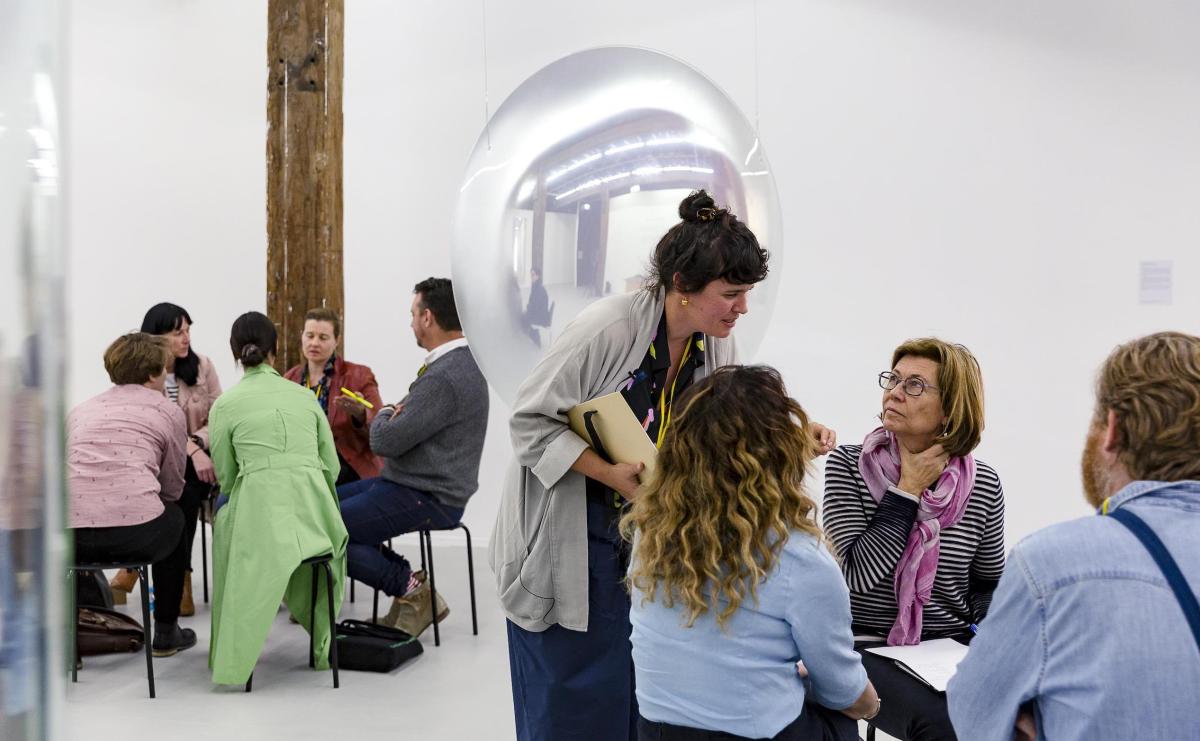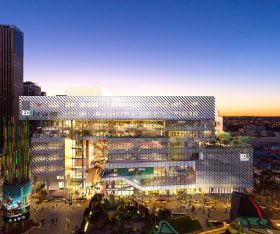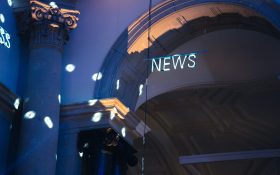Cultural mediation is one of those terms that sounds really good, but we don’t quite know what it means.
Rachel Arndt, Gallery Programs and Touring Exhibitions Manager with Museums & Galleries of NSW (M&G NSW), explained: ‘It is a strange term, and very multi-layered.
‘People think of mediation as solving problems, but really it is a role that sits somewhere between a curator, an educator and a visitor service officer, and is all about facilitating an encounter in a gallery or museum,’ Arndt continued.
She described cultural mediation most simply as a mutual, two-way experience.
‘It’s about negotiating that axis between staff and volunteers and the visitor in a safe and informed way,’ Arndt told ArtsHub.
M&G NSW’s desire to create a Cultural Mediation Resources kit was triggered by the work being done at the Palais de Tokyo, France. Their Head of Cultural Mediation, Marion Buchloch-Kollerbohm visited Australia last year (August 2019) and worked with M&G NSW in a pilot workshop.
Also part of that process also was contemporary artist Mel O’Callaghan, who spoke of her position as an artist showing their work at Palais de Tokyo. Her exhibition Centre of the Centre was shown at Artspace in 2019 and will tour through M&G NSW from 2021.
But it is another Artspace project that has been the catalyst for introducing this best practice on home soil.
M&G NSW is currently touring the exhibition, JUST NOT AUSTRALIAN, nationally, which might pose challenges for some audiences.
‘The themes are just the launching point,’ says Arndt. ‘They are potent current contemporary ideas, and that is the focus of our program – getting those ideas out and talking about them.’
Through the Cultural Mediation Resources, M&G NSW aims to help staff and volunteers develop an inclusive and culturally sensitive vocabulary, enhance communication with local communities and implement post-COVID-19 engagement programming.
Arndt continued: ‘I think regional galleries are already doing this to some degree; they are engaged with their audiences and thinking about what is right for their communities, and what to program to allow them to expand their ideas. We are just helping them with the tools to take it further.’
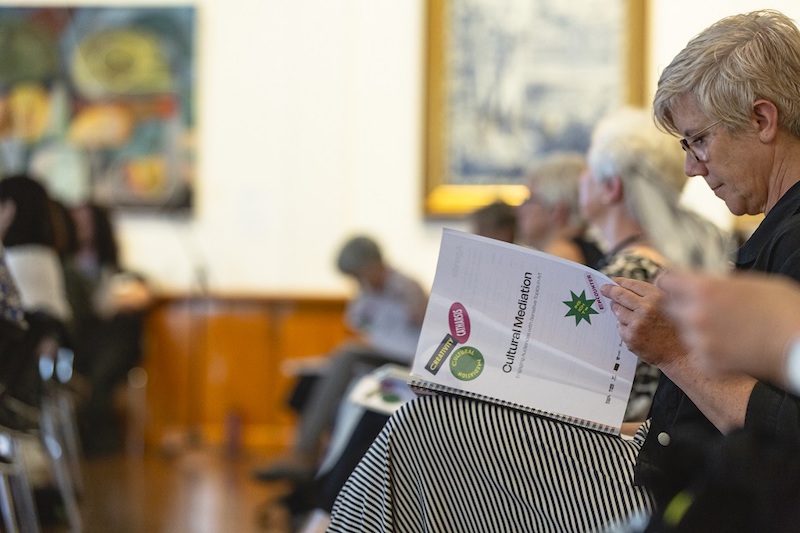
Engaging Audiences with Sensitive Topics, training day at Wollongong Art Gallery. Photo: Document Photography.
A DEEPER DIVE INTO CULTURAL MEDIATION
Arndt says it’s the staff and volunteers who are the frontline of our galleries and museums, and who are often overlooked.
‘It is a really important job, to welcome people into a public space and make them feel comfortable. They are the ones also who get the questions and the complaints,’ Arndt told ArtsHub.
The term cultural mediation was first developed in the 1980s in Europe and North America. Initially associated with the transfer of knowledge, it has since become known more as an act of forming relationships of mutual exchange between the visiting public and artists and the institutions charged with the collection, interpretation and presentation of cultural material.
France, in particular, has incorporated it into their tertiary studies, and this role of mediation has become a staple in many of its major museums.
Cultural mediation is not about changing people’s opinions, or making visitors love contemporary art – it is about creating a moment.
Marion Buchloh-Kollerbohm, Palais de Tokyo, France
Arndt said that Australian regional galleries and museums are particularly well suited to adopt this best practice.
‘We have always thought that regional galleries and museums are situated to do this organically, as a lot already have strong connections with their communities, but do not often have access to training.’
She said a fundamental tenant of cultural mediation is that you don’t have to love the art work. ‘Everybody is expert in some area, and we all have lots of life experiences and thoughts to bring to the conversation. Art can be a way of starting those conversations.’
Arndt broke it down further: ‘It’s essentially a personal experience between people, which will enable more conversation, more enquiry, potentially learning on both sides, and also to privilege the experience of the audience member.’
Over the last five years, there has been a massive refocusing of galleries and museums worldwide, to rethink how we engage with the layered stories in cultural material and to face not only implications of the past, but the touchpoints of contemporary society.
‘The Black Lives Matter movement has resulted in a lot of North American institutions thinking about their language, their staffing structures and how they represent their audiences. Regional galleries, in a sense, are at that forefront because they are so deeply connected to their communities,’ said Arndt.
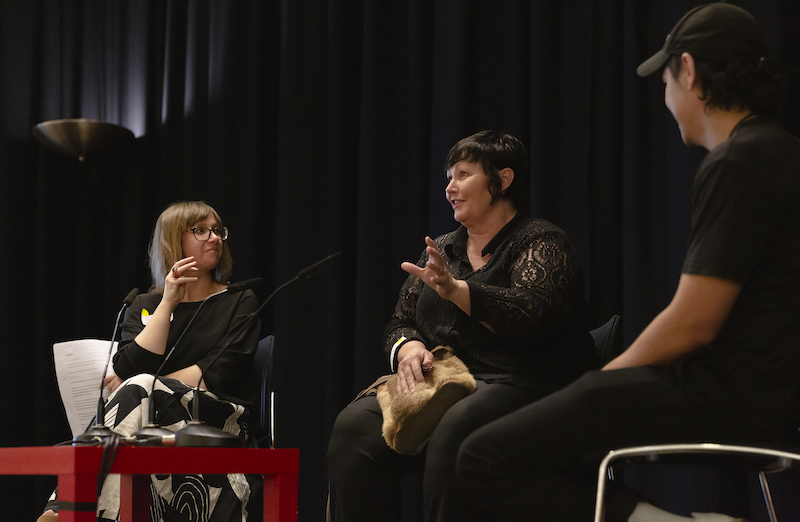
Q&A with Joan Ross & Abdul Abdullah, mediated by Rachel Arndt. Photo: Document Photography.
WHAT TO FIND IN M&G NSW’S KIT OF RESOURCES
These new resources include podcasts, video interviews, training videos and webinars – user-friendly and practical tools which are free and downloadable for anyone.
A video was developed by UQ Art Museum, which looks at their guiding principles when applying a cultural mediation practice to better engage audiences. The Queensland gallery has been at the forefront of implementation of best practice cultural mediation.
M&G NSW has also partnered with University of Sydney, and their larger project Museums as sites of civil society, to present a webinar. It takes a more philosophical position to the role museums and galleries play in a changing climate,.
There is also a series of podcasts, which are largely with artists and talk about their experience of making work for audiences.
They include artists Joan Ross and Abdul Abdullah talking about the idea of “speed bumps”, and deliberate devices to slow down audiences for deeper consideration.
The last resource is a workshop with drama scholar Ian Maxwell, which focuses on behavioural and interpersonal skills within physical spaces.
‘It offers training of interpretive skills – how to relate to people, how to read people, and how to extricate yourself from a situation if it goes pear-shaped,’ explained Arndt. ‘It gets you thinking about how to feel safe – supported – and more comfortable to navigate situations with visitors.’
Additional to the online resources, M&G NSW is also creating a Cultural Mediation Handbook for each of its touring exhibitions going forward.
‘The handbooks will be a longer document with tips and tricks on how to engage with visitors by going really thoroughly into each of the works in the exhibition, particularly through the artist’s own voice,’ Arndt said.
‘Aneshka Mora, a scholar at UNSW, has worked with us to build a vocabulary around how to talk about some of these issues – to support those who are on the floor – such as tips on dealing with questions like, What is decolonial? What is camp? What is irony? What is the context for this work?’
Taking a further cue from Palais de Tokyo, these handbooks will also provide a broad reading list that is cross-disciplinary and contemporary, to really think philosophically and transcendentally across the artworks visitors will encounter, said Arndt.
She added, however, that most of the resources are broad enough to speak to any gallery, museum or exhibition, not just those hosting one of their touring exhibitions.
Learn more about M&G NSW’s Cultural Mediation journey and resources.
The JUST NOT AUSTRALIAN exhibition is currently on tour nationally through to 2022.
